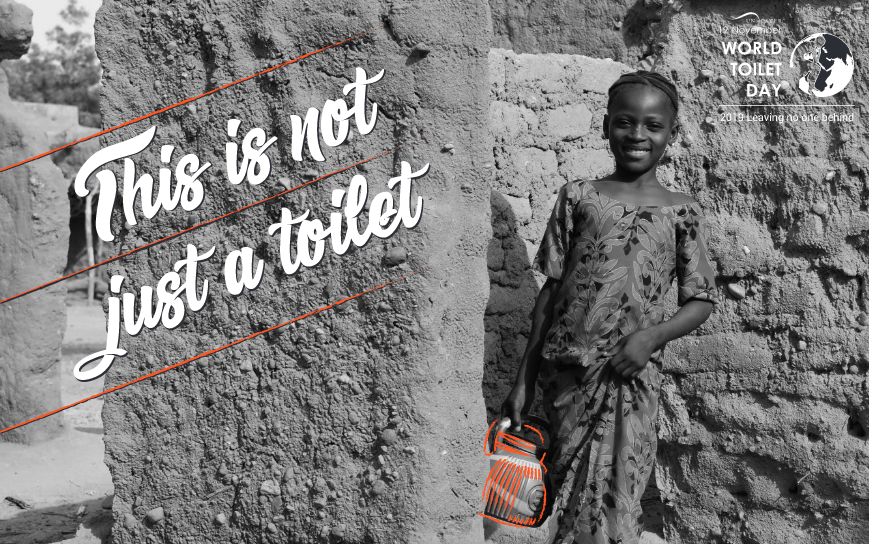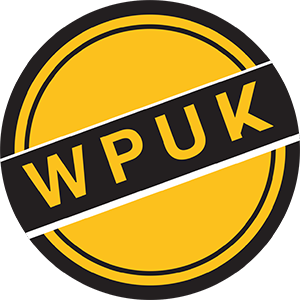World Toilet Day 2019

The United Nations has declared 19th November as World Toilet Day to draw attention to the woeful lack of access to toilets and good sanitation around the world. According to the UN:
- 4.2bn people live without safely managed sanitation
- Inadequate sanitation is estimated to cause 432,000 diarrheal deaths every year and is a major factor in other serious diseases.
- 297,000 children under five are estimated to die each year diarrhea as a result of unsafe drinking water, sanitation and hand hygiene
This lack of provision has a particularly high impact on women and girls.
In their guide, Female-friendly public and community toilets: a guide for planners and decision makers, three organisations (Unicef, WaterAid and Water and Sanitation for the Urban Poor) have come together to produce an action plan to ensure that communities and public bodies worldwide are providing female-friendly toilets. Their rationale is outlined here:
Access to clean sanitation is one of the Sustainable Development Goals and a human right.
Sustainable Development Goal (SDG) 6 includes achievement of universal access to sanitation, and emphasises that to address in particular the needs of women and girls and those in vulnerable situations requires special efforts. However, women and girls continue to suffer disproportionately from inadequate sanitation, and often cannot use a toilet when and where they need.
Few public and community toilets meet the specific requirements of women and girls.
In addition to lack of access to household toilets, a key issue for universal access is low availability of public and community toilets. Where they do exist, these facilities typically do not meet the requirements of women and girls. Men and women have different requirements from facilities due to: biological factors including menstruation and pregnancy; and social and cultural factors such as expectations around maintaining ‘dignity’ and ‘modesty’, women still being the main caregivers for children and sick or older relatives and community members and those with disabilities, and women remaining at greater risk of harassment and sexual violence than men.
This has negative effects on women’s lives.
Failing to plan, design or manage public and community toilets to ensure they are female-friendly and accessible to all users restricts the movement of women and girls, as well as older people and people with disabilities, and limits their ability to participate in public life.This guide will help local authorities take action.
What makes a toilet female-friendly?
According to the guide, female friendly toilets must:
1. Be safe and private:
- be in a safe location;
- have a clearly marked female toilet section with a separate entrance;
- have good lighting;
- have trained male and female attendants;
- have robust, private cubicles.
2. Cater for menstrual and other hygiene requirements by providing:
- water and soap; hooks, shelves and mirrors;
- access to menstrual products;
- means for washing and/or disposal of menstrual products.
3. Be accessible to all users:
- be at a reasonable distance from homes or activity centres;
- be reachable via an accessible path;
- have at least one cubicle accessible to all users.
4. Be affordable and available when needed:
- have enough cubicles to avoid long queues, which means allocating extra space and cubicles for women; be open when needed;
- have an affordable tariff or be free.
5. Be well maintained and managed:
- have adequate management arrangements and cleaning and maintenance budgets;
- have safe management of faecal, liquid and solid waste.
6. Meet the requirements of caregivers and parents:
- have a baby changing station;
- have a family-friendly cubicle.
The Guide goes on to explain what responsibilities local authorities and governments have in ensuring this provision exists in cities and other communities:
Ensuring toilets are female-friendly needs to be a city-wide effort, including assessment and local implementation
Authorities need to plan provision of female-friendly public and community toilets at city-wide scale. A participatory city-wide assessment is recommended to analyse:
1) the public spaces and informal settlements lacking public and community toilets; and
2) the extent to which existing toilets meet female-friendly requirements.
Planners can then use the results to develop strategies to ensure city-wide coverage, including provision of new female-friendly toilets and the upgrading and expansion of substandard toilets.
The process should involve participation of women and girls throughout.
Capturing the experiences and perspectives of people who already, or need to, use the toilets will help to inform desirable locations of the toilets, opening times, tariffs, aspects of operation and management, and which female-friendly features to prioritise. Both the city-wide assessment and local implementation processes need to be gender-sensitive.
This means women and girls and those people and groups who are normally excluded need to play a central role in the processes, to ensure toilets meet their requirements.
Please support actions to raise awareness of World Toilet Day on 19th November.
Female-friendly toilets in the UK?
Whilst recognising that we have a high standard of sanitation and toilet provision compared to other places in the world, it is worth remembering that the same rights and expectations apply to citizens in the UK.
Recently, it has become clear that many feel access to female-friendly toilets is coming under threat with the growth of mixed sex toilets that neither address the under-provision of toilets for women and girls nor respect our need for single sex provision.
The provision of adequate single sex toilet provision has been the subject of much debate in the UK:
- Read our blog Why gender-neutral toilets don’t work for women
- Read our blog on Mixed sex toilets in schools
- Watch Professor Clara Greed speak about toilet provision at our Bath meeting
- Click here for links to these and other sources on toilets
The Guide goes into detail about what good female friendly provision looks like for each of the 6 principles. You can see the charts by clicking here on the links below
2. Cater for menstrual and other hygiene requirements by providing
4. Be affordable and available when needed
5. Be well maintained and managed
6. Meet the requirements of caregivers and parents
Is your local community providing female-friendly toilets?
The guide offers great ideas about how to audit the provision in your community:
Gaps in public toilet provision
For public toilets, the focus is on public spaces or activity areas. These include commercial markets (including informal ones); shopping streets; commuter points, such as metro, train or bus stations, taxi stands, interchanges and areas with high numbers of pedestrians; recreational areas or tourist attractions, such as parks, riverfronts, and heritage areas; religious places; and locations that homeless people or street/pavement dwellers visit.
Although local authorities provide most public toilets, market associations and retail centres commonly provide (or are required to provide) public toilets. All public toilets need to be included in the assessment, irrespective of the institution in charge.
This is useful information you may wish to use if you feel your community or public toilets are not female-friendly.
The guide also suggests creating a colour-coded chart to map out the current provision. 
The guide ends with some ‘Key principles’ which we think could be adapted to challenge inadequate toilet provision where you are:
Do not assume that all women’s requirements are the same. Actively include women and girls with disabilities, older women, and women and girls from a range of classes, castes and/or ethnic and religious groups, etc. This might mean holding separate meetings or engagement activities to target these different groups of users, being mindful of the times and places that suit women and girls and any marginalised groups, and working with existing community-based organisations or NGOs that represent the diverse groups.
Disaggregate data by sex, disability, age and social group to understand more deeply the different users’ perspectives and requirements.
Involve gender-sensitised (and trained) female facilitators to make it easier for women and girls to participate and provide their opinion and more likely for them to do so.
Ensure communication methods are suitable for people who are often excluded. This might mean conducting consultations in all relevant languages including minority languages, or providing consultation questions in braille for visually impaired people. There are many tools and participatory processes for consultation and planning for community and public toilets. For example:
-
Prepare and share detailed/schematic maps (which could be preceded by transect walks) showing the existing sanitation infrastructure and services. Get users to highlight areas where sanitation problems are most acute, and areas to avoid because of religious, safety or other reasons.
-
Run formal and informal discussions (from in-depth interviews to focus group discussions or participatory design sessions) with residents to address any of the questions listed above. It might be advisable to conduct sex-separated focus group discussions to ensure participants can openly discuss female requirements.
-
Run participatory accessibility and safety audits of existing facilities with a diverse group of women and girls, as detailed in Box 3.
-
Conduct visioning exercises and discussions on toilet locations. Based on considerations of distance, infrastructure and safe locations of toilets, and estimation of how many toilet blocks will be needed, implementation teams can identify possible locations for the toilets, and discuss these with groups to incorporate their views before making final decisions.
More detail on what the UN means by these principles
1. Be safe and private:


2. Cater for menstrual and other hygiene requirements by providing:


3. Be accessible to all users:


4. Be affordable and available when needed:

5. Be well maintained and managed:

6. Meet the requirements of caregivers and parents:

We believe that it is important to share a range of viewpoints on women’s rights and advancement from different perspectives. WPUK does not necessarily agree or endorse all the views that we share.

You must be logged in to post a comment.